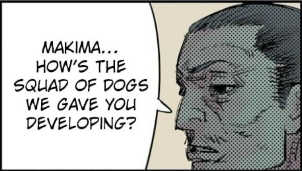Topic: Defining Distance Education
Date: 1980
Course/Subject: Distance Education Studies
Notes
Main Idea
The paper analyzes existing definitions of distance education and identifies six essential components that should be included in a comprehensive definition. The analysis covers different educational philosophies and institutional contexts for distance education.
Key Definitions and Theorists
Holmberg's Definition
Distance education involves the separation of teacher and learner.
Requires planned, structured learning materials and institutional support.
French Law (Loi 71.556 du 12 juillet 1971)
Defines distance education as learning where the teacher is not physically present, except for occasional tasks.
Moore's Definition
Highlights separation of teaching and learning behaviors.
Emphasizes the use of technical media and the importance of two-way communication.
Peters’ Definition
Describes distance education as an industrialized form of education.
Incorporates principles like division of labor, mass production, and mechanization in the teaching process.
Six Essential Components of Distance Education
Separation of Teacher and Student
Physical and temporal separation in the teaching and learning process.
Role of Educational Organization
Planning, preparing, and providing learning materials and support.
Use of Technical Media
Communication between teacher and learner facilitated by print, radio, television, or computers.
Provision of Two-Way Communication
Opportunities for dialogue between teacher and learner.
Possibility of Occasional Seminars
Allowing for some face-to-face interaction for didactic or social purposes.
Participation in an Industrialized Form of Education
Incorporates aspects of industrial processes in the delivery of education, such as standardized materials and automated communication.
Analysis and Discussion
Educational Contexts and Models
Different definitions cater to various levels and types of education (e.g., correspondence, open learning, external studies).
Theoretical frameworks like Peters' focus on the structural separation and mechanization of distance education.
Challenges and Misconceptions
Confusion over terminology, such as correspondence study vs. distance education.
Misunderstanding of the relationship between traditional and distance education models.
Proposed Solution
The term 'distance education' is suggested as the most suitable to encompass various forms and philosophies of education that involve separation of teacher and learner.
Implications
The need for clarity in defining distance education for consistent policy development and theoretical analysis.
Importance of recognizing the distinct nature of distance education as an industrialized form of learning.
Questions/Cues
What are the key differences between Holmberg’s and Peters’ definitions of distance education?
How does Keegan's six-component framework help in distinguishing distance education from other forms of non-traditional education?
Why is Peters’ view on industrialization important in understanding distance education?
Summary
The paper provides a detailed analysis of distance education by examining prominent definitions and proposing a comprehensive framework. Keegan emphasizes the industrialized nature of distance education and the necessity for clear terminology to distinguish it from other educational forms.
Reference
Keegan, D. J. (1980). On defining distance education. Distance Education, 1(1), 13-36.
 * Such as = tal como.
* one = alguien.
* Harbor = alberga.
* towards = hacia.
* 📌 Diferencia principal
* Such as = tal como.
* one = alguien.
* Harbor = alberga.
* towards = hacia.
* 📌 Diferencia principal * 💡 Regla práctica:
Cuando el sujeto incluye una cláusula relativa, el verbo principal se coloca después de toda la cláusula relativa.
Si lo traduciera al español se mueve el verbo copulativo junto con el principal despues de la oración subordinada.
* How is the squad of dogs we gave you developing? = Como el escuadrón de perros que nosotros te dimos esta desarrollándose.
* 💡 Regla práctica:
Cuando el sujeto incluye una cláusula relativa, el verbo principal se coloca después de toda la cláusula relativa.
Si lo traduciera al español se mueve el verbo copulativo junto con el principal despues de la oración subordinada.
* How is the squad of dogs we gave you developing? = Como el escuadrón de perros que nosotros te dimos esta desarrollándose. * ` = es una contracción coloquial sirve para indicar que se omitió la h.
* I was kipping = yo lo estaba cuidando / resguardando.
* ` = es una contracción coloquial sirve para indicar que se omitió la h.
* I was kipping = yo lo estaba cuidando / resguardando.
 * Is there a kind of guy or something (that ) you like por que porque en inglés, es perfectamente correcto y muy común omitir el pronombre relativo (that, who, which) cuando no es el sujeto de la cláusula que sigue. Es decir, cuando se omite el subject de la oración subordinada por que la oración principal cumple esa función. Otra condición es que el pronombre relativo introduzca Definiting Relative Clausules.
* Is there a kind of guy or something (that ) you like por que porque en inglés, es perfectamente correcto y muy común omitir el pronombre relativo (that, who, which) cuando no es el sujeto de la cláusula que sigue. Es decir, cuando se omite el subject de la oración subordinada por que la oración principal cumple esa función. Otra condición es que el pronombre relativo introduzca Definiting Relative Clausules.